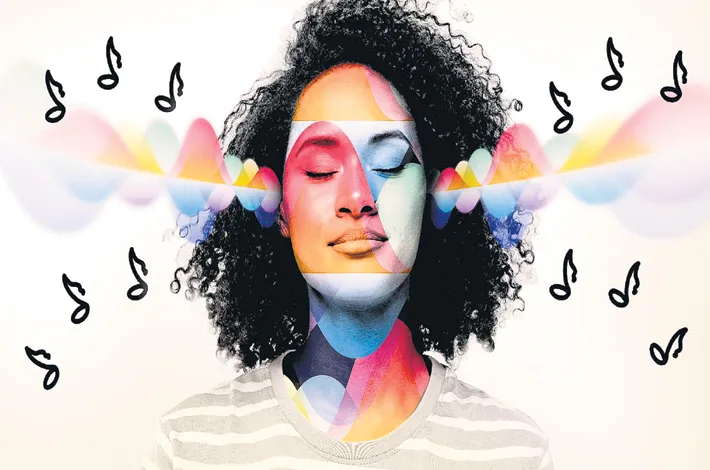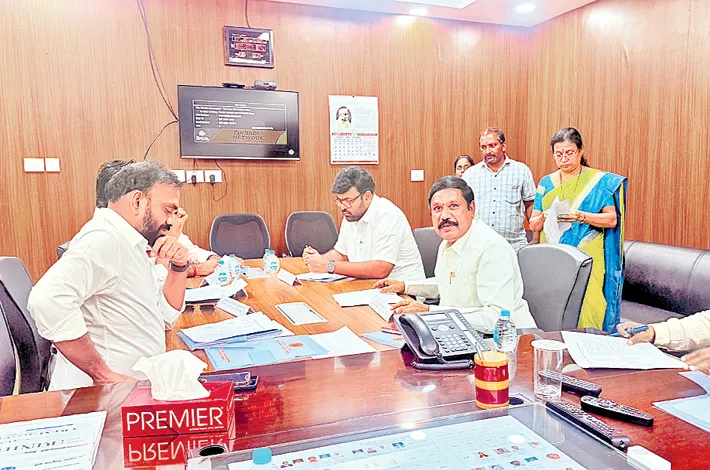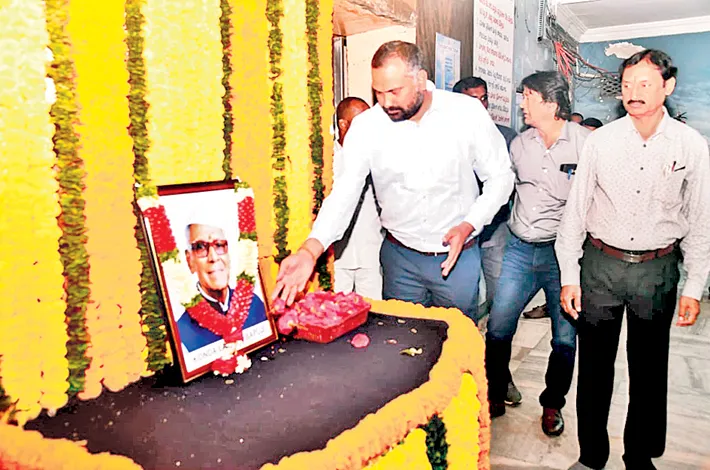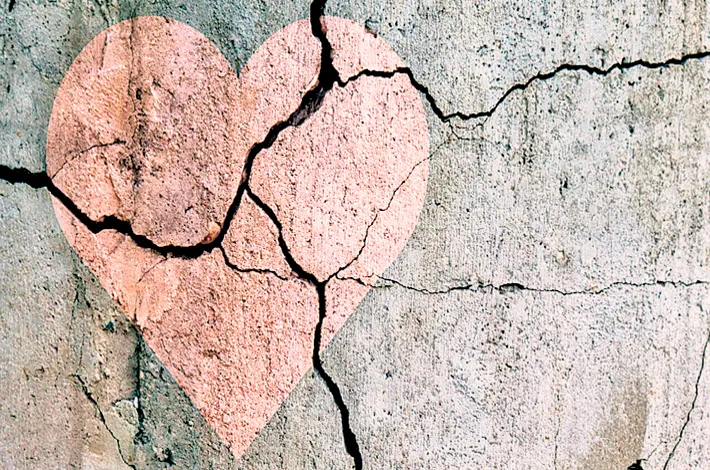The Healing Power of Music in Indian Culture and Tradition
21-05-2025 12:00:00 AM

In Indian culture, music is far more than a form of entertainment—it is a sacred art, a spiritual practice, and a profound tool for healing. Rooted in ancient traditions, Indian music has been revered for its ability to soothe the mind, heal the body, and elevate the soul.
From the Vedic chants to the intricate ragas of Indian classical music, the therapeutic qualities of music have been recognized and harnessed for millennia. This article explores how music heals according to Indian culture and tradition, delving into its historical, spiritual, and scientific dimensions.
The Historical and Spiritual Foundations of Music in India
The origins of music as a healing force in India can be traced back to the Vedas, the ancient sacred texts composed over 3,000 years ago. The Sama Veda, one of the four Vedas, is dedicated entirely to music and chants, emphasizing the power of sound to connect humans with the divine. Vedic chants, known as mantras, are rhythmic, melodic recitations believed to have vibrational qualities that influence both the chanter and the listener. These mantras, often chanted in Sanskrit, are thought to align the body’s energies with cosmic rhythms, promoting physical and emotional well-being.
In Indian philosophy, sound is considered a manifestation of the divine. The concept of Nada Brahma—the universe as sound—underscores the belief that music is a pathway to spiritual liberation and healing. According to this principle, the primordial sound Om is the source of all creation, and its vibrations resonate within every living being. Chanting Om or other mantras is believed to harmonize the body’s energy centers, or chakras, restoring balance and health.
Indian classical music, both Hindustani and Carnatic, builds on these spiritual foundations. The system of ragas—melodic frameworks with specific notes, scales, and emotional qualities—is central to the healing process. Each raga is associated with a particular mood, time of day, or season, and is believed to influence the listener’s mental and emotional state. For example, Raga Bhairavi is known for its calming effect, often used to alleviate stress, while Raga Darbari is said to promote restful sleep and relieve insomnia.
Music as Therapy in Indian Tradition
In Indian tradition, music has long been integrated into healing practices. The ancient science of Ayurveda, India’s traditional system of medicine, recognizes the therapeutic potential of sound and music. Ayurveda emphasizes the balance of the three doshas (Vata, Pitta, and Kapha), and music is used to restore harmony when these energies are disrupted. Specific ragas are prescribed to address physical and psychological ailments. For instance, Raga Todi is believed to help with hypertension, while Raga Malkauns is associated with calming anxiety and improving mental clarity.
The practice of Nada Yoga, or the yoga of sound, is another cornerstone of music’s healing legacy in India. Nada Yoga involves deep listening and the use of sound to meditate and achieve inner peace. Practitioners focus on external sounds (such as music or mantras) or internal sounds (like the breath or heartbeat) to enter a meditative state. This practice is believed to reduce stress, enhance concentration, and promote emotional healing by aligning the practitioner with the universal vibration.
Devotional music, such as bhajans and kirtans, also plays a significant role in healing. These forms of music, often performed in groups, involve singing praises to deities or expressing spiritual devotion. The collective energy of group singing, combined with the repetitive and rhythmic nature of bhajans, creates a sense of community and emotional upliftment. Studies have shown that such practices can lower cortisol levels, reduce anxiety, and foster a sense of connection, all of which contribute to mental and emotional well-being.
The Science Behind Music’s Healing Power
While Indian tradition has long recognized music’s therapeutic potential, modern science is beginning to validate these ancient beliefs. Research in music therapy shows that music can influence brainwave activity, heart rate, and hormone levels, promoting relaxation and reducing stress. Indian classical music, with its complex rhythms and melodic structures, has been found to stimulate the brain’s reward centers, releasing dopamine and enhancing mood.
The concept of raga chikitsa (raga therapy) is gaining attention in scientific circles. Studies suggest that specific ragas can affect the autonomic nervous system, helping to regulate blood pressure, heart rate, and respiratory function. For example, a 2015 study published in the Journal of Alternative and Complementary Medicine found that listening to Raga Bhimpalasi significantly reduced stress and anxiety in participants. Similarly, the slow, meditative pace of certain ragas can induce a state of deep relaxation, akin to meditation, which is known to lower stress hormones and improve immune function.
The vibrational quality of Indian music is another key aspect of its healing power. The repetitive patterns of mantras and ragas create sound waves that resonate with the body’s cells and tissues. This resonance is believed to stimulate the body’s natural healing processes, a concept that aligns with modern research on sound therapy and vibrational medicine. For instance, chanting Om has been shown to increase alpha brainwave activity, associated with relaxation and mental clarity.
Music in Modern Indian Healing Practices
In contemporary India, music continues to be a vital tool for healing, both in traditional and modern contexts. Music therapy is increasingly being integrated into hospitals, wellness centers, and mental health programs. Therapists use ragas, mantras, and devotional music to address conditions such as depression, anxiety, and chronic pain. For example, music therapy sessions for cancer patients often incorporate soothing ragas to reduce pain perception and improve emotional well-being.
Community-based music practices, such as satsangs (spiritual gatherings) and group kirtans, remain popular across India. These gatherings provide a space for collective healing, where participants experience emotional release and spiritual connection through music. In rural areas, folk music traditions, such as Baul songs in Bengal or Qawwali in Sufi traditions, serve as outlets for emotional expression and communal bonding, contributing to mental health.
Indian music’s global influence is also evident in the growing popularity of practices like kirtan and mantra meditation in the West. Yoga studios and wellness retreats worldwide incorporate Indian music to enhance meditation and healing practices, reflecting the universal appeal of its therapeutic qualities.
Conclusion
In Indian culture and tradition, music is a bridge between the physical, emotional, and spiritual realms. From the sacred chants of the Sama Veda to the intricate melodies of classical ragas, music has been a cornerstone of healing for centuries. Its ability to balance energies, evoke emotions, and connect individuals to the divine makes it a powerful tool for well-being. As science continues to uncover the mechanisms behind music’s therapeutic effects, the wisdom of Indian traditions remains as relevant as ever. Whether through the meditative strains of a raga, the devotional fervor of a bhajan, or the universal vibration of Om, music in India continues to heal, uplift, and transform lives, embodying the timeless truth of Nada Brahma—the universe is sound, and sound is healing.








